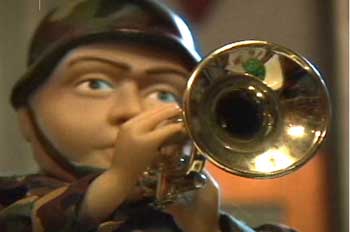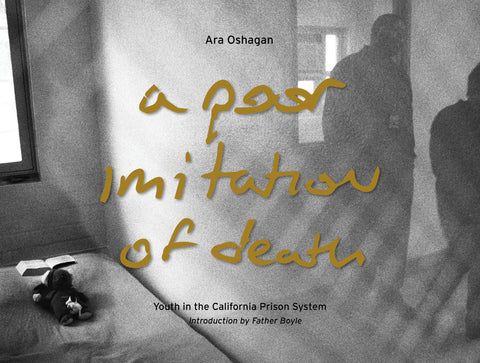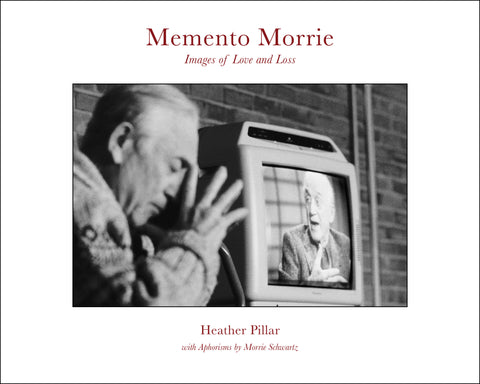On entering Rosler’s new show, visitors are asked to make a symbolic choice. You can pay a dollar and fritter away your time playing Dance Dance Revolution, the Japanese arcade game that’s basically the dance equivalent of karaoke, or for a quarter (a change machine is provided), go through a turnstile and see the show. The choice is congruent with the concerns of the work behind the turnstile, which is an update and an expansion of her Bringing the War Home: House Beautiful for an era with an eerily similar pugilistic quagmire.
The show is largely comprised of a series of digital photomontages that hew (perhaps too closely) to the old model. Rosler continues to smash together war reportage with the glossy ejecta of the style industry, and to beg the questions of both how we direct our attention, and how an industry aggressively designed to monopolize it might be—tacitly or not—complicit in the horrors of war. Despite their familiarity, the political message still smolders, and is a welcome respite from the market-dominated ethos of much contemporary art. Also present are an array of binders containing newspaper clippings and ephemera archiving the tragic arc of the Bush years, complete with a study area hung with images of the spines of books of utopian and dystopian fiction, investigative journalism, and leftist political philosophy taken from Rosler’s extensive personal library.

Most affecting are a new sculptural work of an outsized prosthetic leg and a brutally succinct new video work: Hung from the ceiling and adorned with images of fashionable shoes, the giant prosthesis kicks at the air, it’s somber rhythm and creaking pneumatics bringing to mind the futility and frustration characteristic of our seemingly interminable conflicts abroad. On a small video screen nearby, a toy soldier gyrates while he plays a tinny rendition of Irving Berlin’s “God Bless America”. While the work seems at first to be a snide Duchampian gesture aimed at the straw man of patriotic kitsch, as the camera pans over the body of the novelty soldier it is revealed that Rosler has intervened and executed a much more subtle détournement. One of the little soldier’s pant legs has been rolled up to reveal the mechanized armature underneath, which resembles nothing so much as one of the high-tech prostheses that prop up those who have been ravaged by war.



